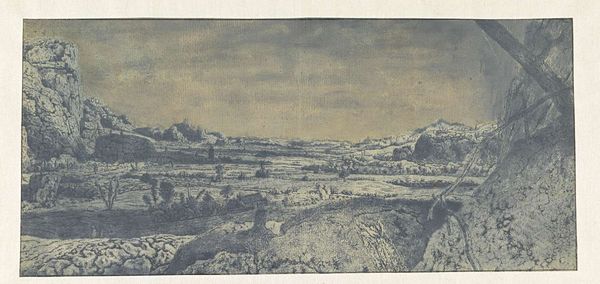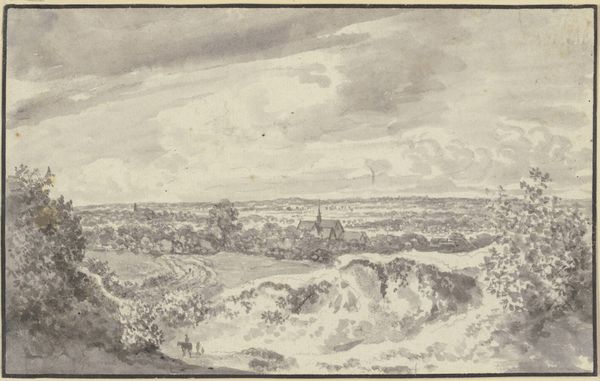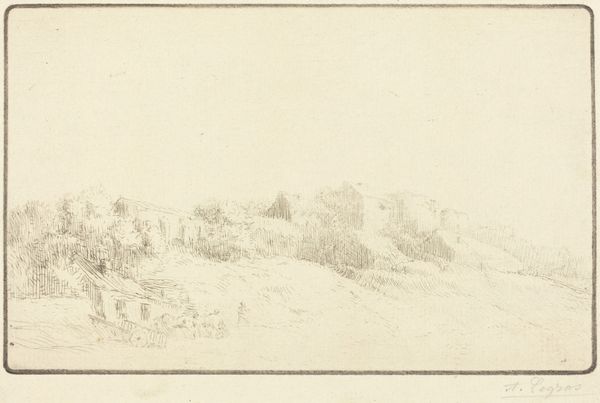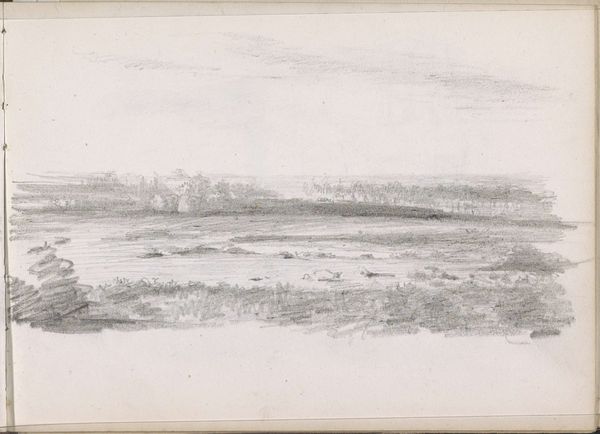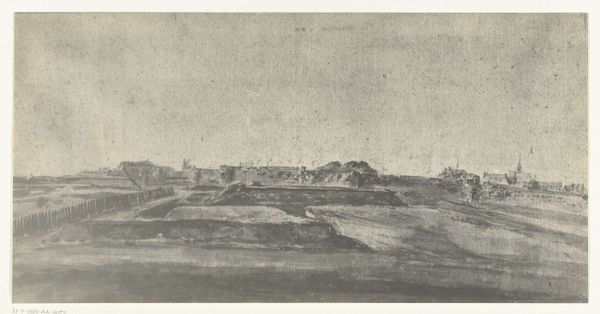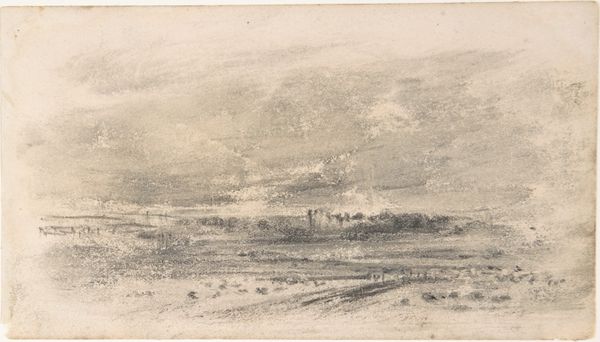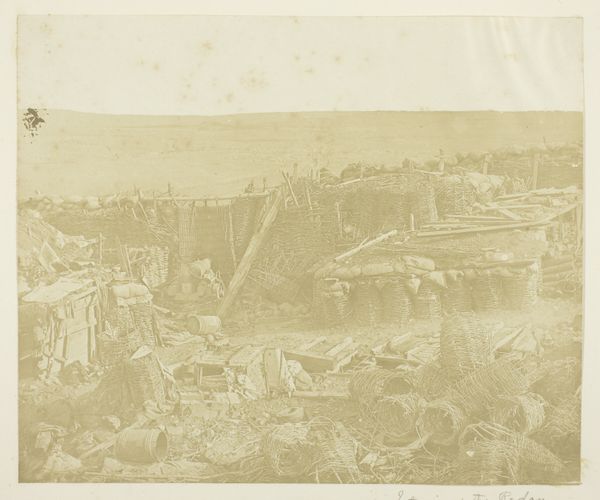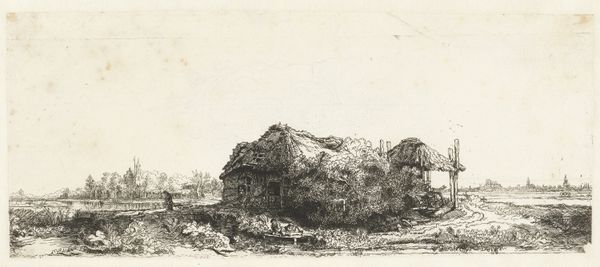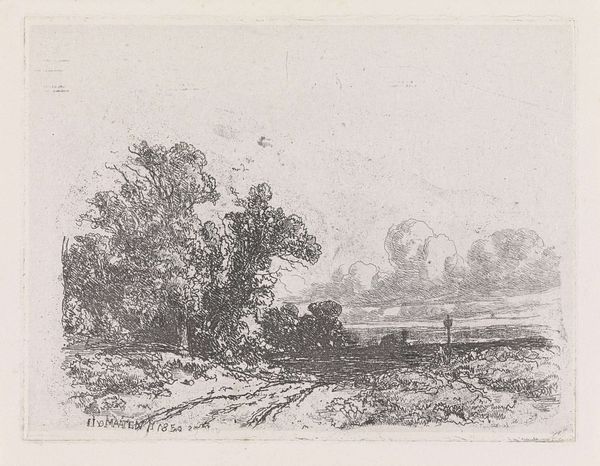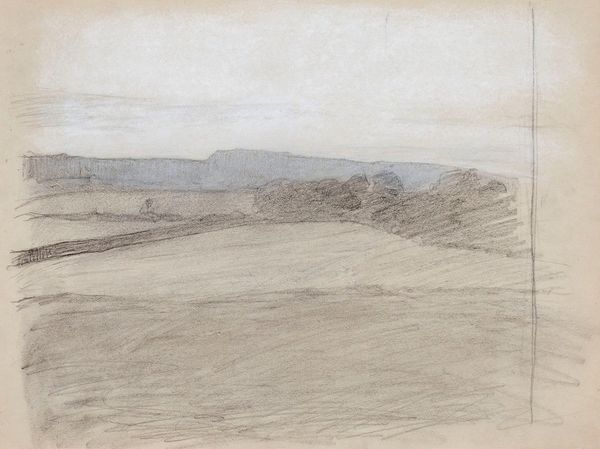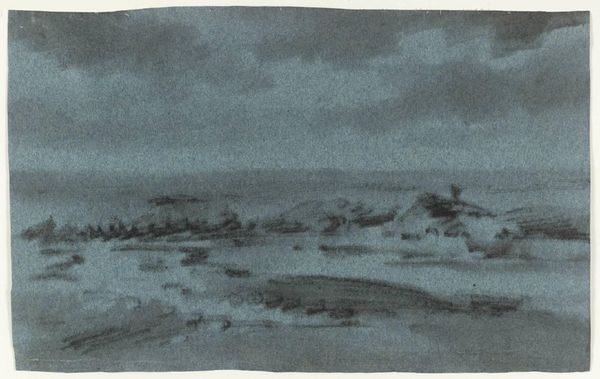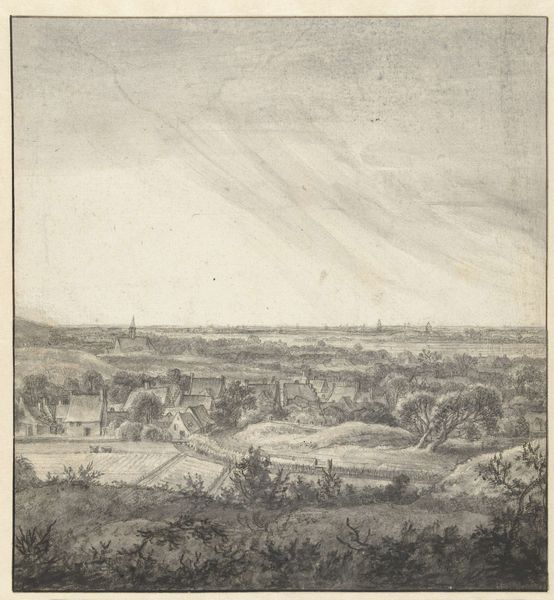
drawing, etching
#
drawing
#
baroque
#
dutch-golden-age
#
etching
#
landscape
Dimensions: height 250 mm, width 401 mm
Copyright: Rijks Museum: Open Domain
Editor: Here we have Hercules Segers' "Mountain Valley with Fenced Fields," an etching dating from around 1625-1630. There's something haunting about the landscape; it’s a scene, and yet it feels otherworldly. What do you make of it? Curator: Haunting is the perfect word! It reminds me of half-remembered dreams, doesn’t it you think? Segers was a true alchemist with printmaking. The moody light, the way he built up the textures through repeated bitings... It’s not just a landscape; it’s a psychological space. The low horizon emphasizes that sky—vast and unknowable. Have you noticed how he uses these dark masses to frame a world that feels immense despite its relative smallness? Editor: Definitely. The heaviness on either side sort of pushes you into the open space in the middle. It’s like you’re peeking into something private. Curator: Exactly. And think about what "landscape" meant then, not simply documentation, not yet scientific rendering; there's a symbolism in these works. Maybe about the transience of existence, you know, nature as both beautiful and indifferent to our brief lives? Perhaps the fences mean control, limits or boundaries. Segers had some troubled times, he even lived in Rembrandt’s old house. Editor: Wow, I hadn’t considered how his biography might tie in with his art like that! Curator: It’s all a delicious puzzle, isn't it? You bring your perspective; I offer mine. What ultimately stays with you after viewing this. That is true Art. Editor: Absolutely. I’ll definitely see his work in a new light now. Thanks for all the insight!
Comments
rijksmuseum about 2 years ago
⋮
Segers printed this nocturnal scene with a generous amount of plate tone: he did not wipe all of the ink from the etching plate. Next he overpainted the impression with blue watercolour. The valley seems bathed in the light of an invisible moon.
Join the conversation
Join millions of artists and users on Artera today and experience the ultimate creative platform.
